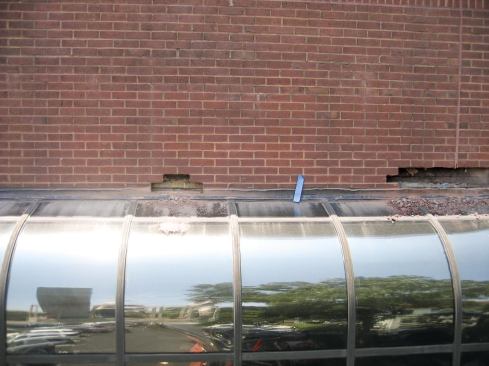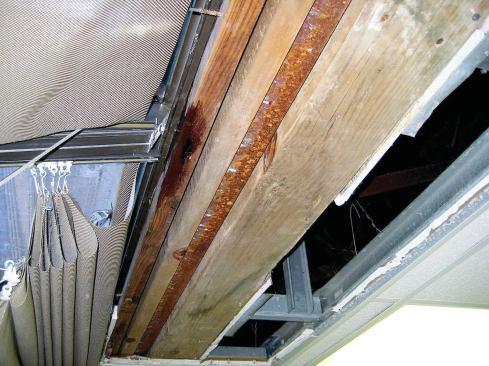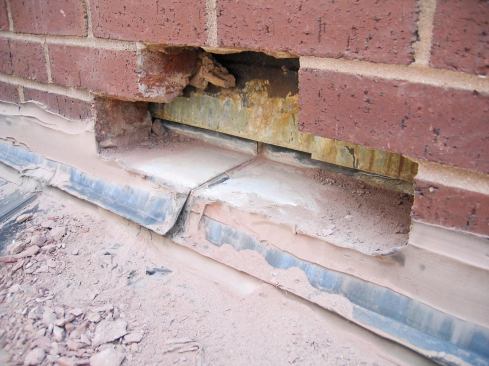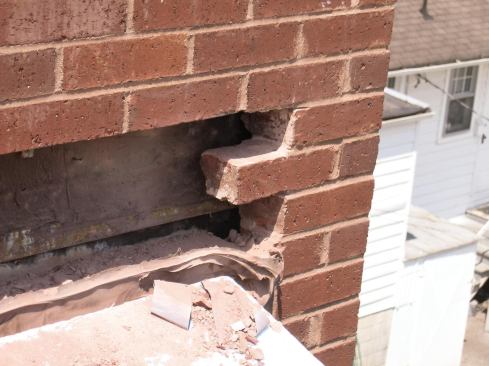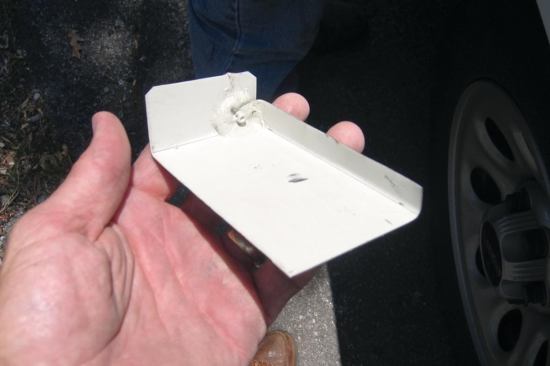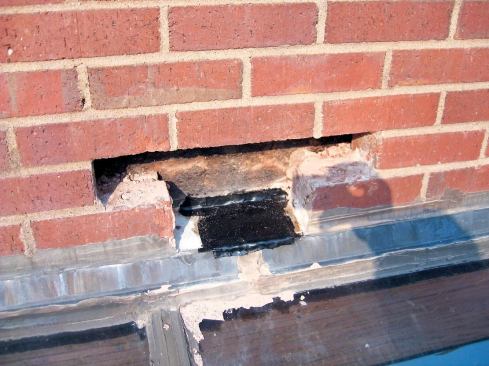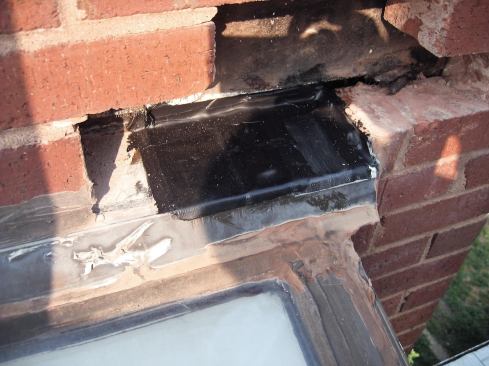Integrating the Flashing
© McCampbell & Associates
The offices under this curved glass roof had been getting wet fo…
Through-wall flashing should extend to the outer face of the brick. Anything short of that is that much less effective at getting the water out. And the back upper leg must be placed under the layers of building paper that protect the sheathing.
Building paper. In my opinion, brick — like stucco — should be installed over two moisture barriers. I like to see a layer of 30-pound felt covered with a plastic housewrap like Typar or Tyvek. That way, the Tyvek protects the felt from the sun during construction. The housewrap acts as a first line of defense against any moisture that might be held by excess mortar in the cavity; the thick felt ensures that the moisture is held at bay until it can evaporate.
There are several new construction materials that claim to be a combination structural sheathing and moisture barrier. Even if these products meet the requirements from a structural standpoint and pass the moisture-resistance tests, their ability to properly shed moisture at critical points depends on adhesives. Unfortunately, peeling flashing tape is all too common, in my experience. The tapes lose their tack and begin to roll down along the top of a window; ironically, the same material that was being relied on to keep water out now traps it. There are of course various primers that can be applied to improve adhesion, but their chances of being used are slim to none.
If you insist on relying on tape over housewrap, at least make sure that both products come from the same manufacturer and that you explicitly follow the installation instructions. (Don’t use your client as a guinea pig!)
Keep the Cavity Clean
If wall cavities were created in a perfect world, they would be just that — cavities. The mortar, and any water it holds, would stay completely away from the felt or housewrap that guards the wall sheathing. But since masons are usually pressed to do their jobs as quickly as possible, excess mortar on the back of the brick will naturally collect along the bottom of this cavity. As a precaution, always make sure that the back leg of the through-wall flashing at the base of the wall reaches above the likely level of the mortar droppings — 8 inches is good for a single-story house, more for additional stories.
There are some new plastic mesh products designed to catch mortar droppings above the bottom of the cavity so as to keep the weep holes clear. One possible problem with this approach is that the mortar may collect above the back leg of the base flashing, so if you use a mortar mesh you have to make sure the flashing extends above the point where the mortar might collect.
